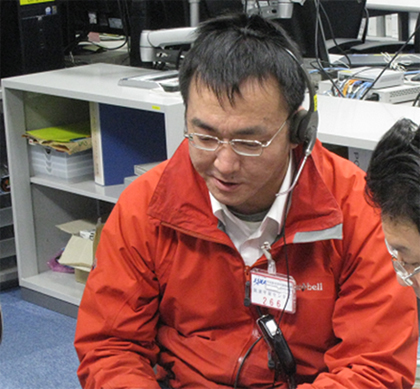This is an archive of information released in the past.
Disclaimer: It may contain broken links or outdated information. Some parts may not function in current web browsers.
*Visit https://humans-in-space.jaxa.jp/en/ for the latest information.

Experiment
- News
- Kibo Utilization Strategy
- Kibo Utilization Plan
- List of JAXA's Utilization Themes
- Experiment Facilities
- Space Environment Utilization
- Archive
Nanoskelton-2 Begins
* All times are Japan Standard Time (JST)
The Production of High Performance Nanomaterials in Microgravity-2 (Nanoskeleton-2)*, a material production experiment that uses the Cell Biology Experiment Facility (CBEF), began on board Kibo.
*Principal Investigator (PI): Masahiko Abe, Professor, Tokyo University of Science
Samples for the Nanoskeleton-2 experiment arrived at the International Space Station (ISS) aboard the space shuttle Discovery (STS-133) on February 25, 2011. Once arrived at the ISS, the samples were unpacked and kept frozen in the station's refrigerator/freezer MELFI. Before the experiment begins, the samples were retrieved and thawed by ISS crew members. On March 29, the samples were mixed and stirred, and the experiment began at 7:50 p.m.
Nanoskelton is a new category of material, which has improved properties of porous materials used for development of photocatalyst. Nanoskelton can be produced on the ground. This experiment tries to create nanoskeleton samples, which the size of the pore (the part of the pipe-shaped hole) of the tube are widened, in the microgravity condition characterized by absence of gravity-induced convection, surfacing, and sedimentation. After the space-produced Nanoskelton samples are returned to the ground, the experiment team will compare the samples produced under artificial gravity and the samples produced in microgravity. Then, the team will examine effects of gravity on the production processes of the Nanoskelton materials. Using computer simulation, the team will determine the best condition for production of high quality Nanoskeleton materials.
Nanoskeleton-2 consists of two in-flight sessions. The first session is planned from March 29 to April 1, and the second session is scheduled from April 5 to 8, 2011. The produced samples will be returned to the ground aboard the space shuttle Endeavour (STS-134 mission).
Special Message from Principal Investigator (PI)
Based on the findings of the Nanoskelton-1 experiment performed last year, the Nanoskelton-2 is designed to obtain higher quality of Nanoskelton samples and further understand the effect of microgravity on creation of porous material.
We managed several schedule changes due to launch delay of the STS-133 mission, however we finally began the Nanoskelton-2 in-flight experiment.
We will try to create high quality porous materials based on the data obtained during the experiment in space.

Kenji Endo, a member of the Nanoskelton experiment team
monitoring the experiment at the UOA (Photo Credit: JAXA)
*All times are Japan Standard Time (JST)
| Copyright 2007 Japan Aerospace Exploration Agency | Site Policy |